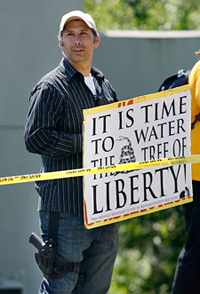Continuing from the earlier post What the Wind Blows, presenting a schema of Four Orders given as a phenomenological device. (This device captures the diversification of awareness about one’s own behavior–it ranges from the unconscious yet singularly aware First Order, to the conscious and singularly aware Second Order, to the conscious and aware-with-choice Third Order, to the conscious and aware-with-reasons-for-choosing Fourth Order.)
This general scheme may be extended to also frame a view of belief about any person’s relationships to the world. And this is extended to, specifically, belief as awareness about the objects (and objectification,) given by social aspects of the world.
First order – Singular; no articulated belief; (not applicable)
Second Order – Singular; “This is what I believe!”
Third Order – Multiple; “This is what I believe, but, from other perspectives, what I believe looks different.”
Fourth Order – Multiple; This is what I believe, but I understand why I believe this–rather than some other thing. And, so, I can also see how I might come to believe this some other thing.
Note: the more diverse, the more ambivalent; the more diverse, the more available are possible choices of what to believe. Ambivalence, divergences, searching for other possible perspectives, (etc.) may work together to, in a sense, “de-certify” the absolute, non-ambivalent, convergent, certainties.
Strong Second Order features are found in the current political discourse. It tends toward singular testaments of certainty. Roughly, First and Second Order positions do not obtain the cognitive complexity inherent in Third and Fourth Orders. Second Order beliefs (or positions,) seem, in effect, programmed, and seem to converge on the program.
Someone protests,
“They are trying to steal my liberties, and, my country from me!”
In this statement of protest there are three objects: they, liberties and country. The latter two are possessed as such by the subject. Nevertheless this possession is subject to being nullified by “they.”
Consider, if you can, what it would feel like inside to possess liberty and country, and, in feeling this, also feel the deprivation were one dispossessed of same. Consider also what it would feel like to have a much looser, less associated, relationship with objects such as these.

Contemplate what are the implications of the objects discoverable as features of the belief of the sign carrier above. Do this just from considering what are the possible implications given by the photograph.
What I find gripping is to consider the object relations found in Second Order belief. This is to suggest how the combination of certainty and splitting work to support single-minded beliefs.
Conspiracy. Almost all conspiracy-mindedness reflects reduction to a singular perspective, certainty, and, require casting split-off parts, in effect, ‘away’ from the highly charged core certainties.
Second Order belief may be very bad at evaluating evidence. Birthers, young earth and intelligent design creationists, 9-11 conspiratoids, each showcase how bad they are at this, but, at the same time, each are–in different ways–obsessed with evidence too. In this, the splitting dynamic is obvious.
Face-to-face with Second Order belief provides an opportunity to drill down and learn if there exists any fragile level of depressive ambivalence. At such a level, anchoring of the ‘First Order” belief may be tenuous because the belief is no longer rooted in the unequivocal solid ground of certainty. However, often this level is not accessible.
I find people’s fears to be poignant. It’s ironic when people’s fears are characterized as being irrational, when such a characterization itself is Second Order–comes from a singular evaluation rather than any possible alternative. A person’s belief that the governmental ‘object’ will dispossess he or she of their ‘liberty’ object is rational at the level of what is true for the particular object relations. It’s as if liberty can be stripped away. Thus, this prospect of dispossession feels frightening.
In this respect, the move to a more cognitive complex order is poignant, as is the First and Second Order fearfulness also poignant.
